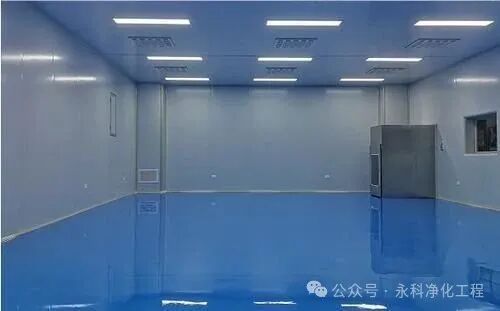As the electronic manufacturing industry continues to raise its standards for cleanliness in production environments, many older circuit board clean rooms are struggling to meet modern process requirements. Common issues in these outdated workshops include aging equipment, insufficient cleanliness, high energy consumption, and unreasonable layouts, all of which directly affect product quality and production efficiency. How can we revitalize these old workshops? This article will explore pain points, renovation strategies, technological upgrades, and cost optimization, providing practical references for electronic manufacturing enterprises.

1. Common Pain Points of Old Circuit Board Clean Rooms
1.Insufficient Cleanliness
The early design standards were low and cannot meet the current requirements for air cleanliness as specified by ISO 14644-1 or GMP.
The aging filtration system and untimely replacement of HEPA/ULPA filters lead to excessive particulate matter.
2.High Energy Consumption and Operating Costs
The air conditioning system is inefficient, and temperature and humidity control is inaccurate, leading to energy waste.
Lighting and equipment have not adopted energy-saving technologies, resulting in high long-term operating costs.
3.Unreasonable Layout and Low Space Utilization
The planning of production lines and clean areas is chaotic, leading to low material flow efficiency.
There is a lack of flexible adjustment space, making it difficult to adapt to new product or process upgrade requirements.
4.Safety Hazards and Compliance Risks
Safety facilities such as anti-static, explosion-proof, and fire protection are aging, posing risks of production accidents.
Failure to pass the latest industry standard certifications (such as ISO 9001 and IATF 16949) affects customer cooperation.
2. Core Strategies for Renovation and Upgrade
1.Precise Assessment and Demand Definition
Current Diagnosis: Use professional testing equipment (such as particle counters and anemometers) to assess cleanliness, temperature, humidity, and pressure differential parameters in the workshop.
Demand Alignment: Align renovation goals with production processes (such as SMT placement and packaging testing) to clarify renovation targets (e.g., from ISO 7 to ISO 5).
2.Air Purification System Upgrade
Efficient Filtration: Replace HEPA/ULPA filters and optimize airflow organization (unidirectional flow or turbulent flow).
Intelligent Monitoring: Deploy sensors to monitor PM2.5, temperature, humidity, and pressure differential in real-time, linking control systems for automatic adjustments.
3.Energy Saving and Intelligent Transformation
Air Conditioning System Optimization: Use variable frequency technology and heat recovery devices to reduce energy consumption by more than 30%.
Lighting Upgrade: Replace with LED explosion-proof lights and implement intelligent sensing controls to achieve “lights on when people are present, lights off when people leave.”
Digital Management: Introduce an MES system to achieve linked analysis of production data and purification parameters.
4.Space Layout and Process Optimization
Modular Design: Use removable partitions and mobile workstations to enhance spatial flexibility.
Logistics Flow Planning: Reduce the risk of cross-contamination and improve material turnover efficiency.
5.Enhancing Safety and Compliance
Anti-Static Renovation: Install anti-static flooring and workstations, and install ion blowers to eliminate static electricity.
Fire Safety Upgrade: Add gas fire extinguishing systems, emergency lighting, and evacuation indicators.
Certification Support: Assist enterprises in obtaining international certifications such as ISO 14644, CE, and UL.
3. Renovation Case Study: Upgrading an Old Workshop in an Electronics Factory
Background: A circuit board factory workshop was built in 2008, with cleanliness only at ISO 8, and the yield rate has long been below 90%.
Renovation Plan:
1. Replace high-efficiency filters and optimize the air supply system, improving cleanliness to ISO 6.
2. Introduce variable frequency air conditioning and intelligent temperature and humidity control systems, reducing energy consumption by 25%.
3. Replan the production line layout, improving material flow efficiency by 40%.
Results: After the renovation, the yield rate increased to 96%, and annual operating costs were reduced by 1.2 million yuan, successfully passing Apple supply chain certification.
4. Common Misconceptions and Recommendations for Renovation and Upgrade
Misconception 1: Blindly Pursuing High Cleanliness
Recommendation: Set cleanliness levels reasonably based on product process requirements (such as micron/nanometer-level circuit boards) to avoid excessive investment.
Misconception 2: Ignoring Long-Term Operating Costs
Recommendation: Prioritize energy-saving equipment (such as EC fans and magnetic levitation compressors) and balance initial investment with long-term returns through ROI analysis.
Misconception 3: Risk of Production Shutdown During Renovation
Recommendation: Use phased construction and modular renovation to minimize impact on production.
Conclusion from Fujian Yongke
In the context of increasing industry competition and stricter environmental protection requirements, the renovation and upgrade of old circuit board clean rooms is not only a necessary means to improve product quality but also a key path for enterprises to reduce costs, increase efficiency, and achieve sustainable development. Through scientific planning, technological innovation, and refined management, old workshops can completely be revitalized and become a part of the core competitiveness of enterprises.